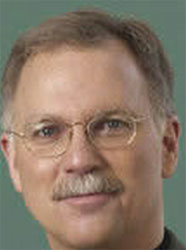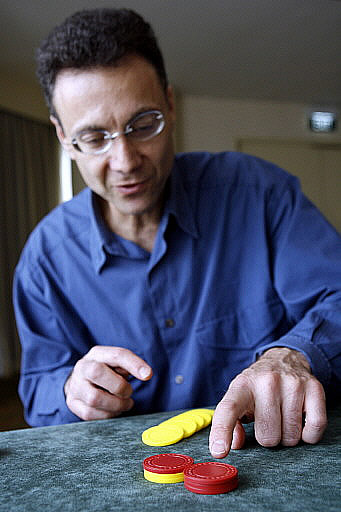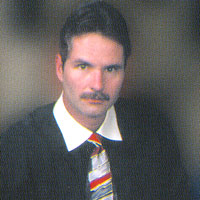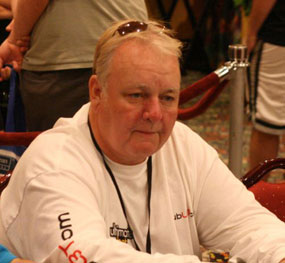The 19th century may have been the time when cheating at the tables became a profession in its own right – legendary figures like George Devol, Canada Bill Jones, and Elijah Skaggs conned their way across riverboats and pleasure dens stretching the length and breadth of America. However, it was only in the second half of the 20th century that blackjack became ripe territory for the black arts. The game itself goes much further back, but it was only with the creation of the first practical computers, and the publication of influential maths-based guides like Edward O Thorp’s ‘Beat The Dealer’, that blackjack rose to true prominence. And where there are lots of players clamouring for action, there are going to be plenty of others looking to twist and bend the odds.
Joe and Henry Classon
The Classons might be one of the most influential families in the whole of gambling, and brothers Joe and Henry would lay down much of the groundwork for later crews. The starting point came with older-brother Henry, who trawled the poker and craps tables while his brother served in Korea. It was Henry’s fortune to fall in with ‘Mumbles’, a New Yorker who had turned to gambling while holidaying in Puerto Rico, recuperating after an operation for throat cancer – the operation would leave him with virtually no voice, hence his nickname. Mumbles had noticed that dealers sometimes confused chips of one colour for those of another. After a dealer mistook one player’s $30 bet (consisting of a purple $25 and a red $5 chip) for a pair of red $5 chips, Mumbles devised the idea of waiting for a winning play, and then surreptitiously removing chips of one colour, and replacing them with those bearing other more valuable denominations. This strategy of adding further chips would come to be known as ‘Past-posting’ – named after the practice of some corrupt horse-bettors to place bets after the race had already been run, and when the name of the first horse past the post was already known – and Mumbles used it to amass decent wins in both craps and roulette.

The system worked best when the cheater had an accomplice, a ‘mechanic’ who could put up the necessary chips before the ‘claimer’ would step in and alert the dealer to his ‘mistake’. As it happened, Mumbles was in search of a new partner after his previous mechanic had died of a heart attack – although not before the pair had spent a week proving that the idea worked. Henry was destined to become Mumbles’ new accomplice, and they would fine-tune the system, taking large amounts of money from the casinos. Mumbles, though, wasn’t in the best of health himself, and died less than a year later, in 1954. Luckily, Henry didn’t have to look far to find a new partner.
His brother, Joe, had now left the army, and Henry would quickly persuade him to junk his ideas of getting a legitimate profession, and turn instead to further developing pastposting.
The brothers would work together for 15 years, during which time the system would be finetuned and slimmed down so that it could be performed more stealthily. The top chip would be slanted slightly so that it obscured the bottom chip, allowing the system to work again and again. Up to this point, games like roulette and craps had remained the key. It wasn’t until Joe decided to forge his own team, in 1969, that blackjack became the primary focus. While there was plenty of money available in blackjack, the dealer was located much closer to the players, and the Classons felt this would make it harder to pull off the con. However, a new brash recruit, Jerry Palmer, wasn’t having any of this, and calmly sat down at table after table, pulling off the pastpost to outstanding effect. Having proven that you could reproduce the ruse at blackjack, and get almost double the payout, Joe Classon’s hungry young guns would make this game their main prey. The team would last until being dissolved by Joe in 1989. Across 20 years, they had broken the blackjack tables time after time.
Richard Marcus
The ghost of Joe Classon would continue to haunt blackjack tables long after his retirement, thanks partly to the exploits of his young protege Richard Marcus. Marcus had seen the highs and lows of gambling, and had even been homeless – albeit with the sun-soaked sands of Vegas to keep him warm – before landing a job as a dealer. It was in this guise that he found himself dealing cards to Joe Classon himself. Grasping that Marcus had significant knowledge of gambling, and knowing that his time as a dealer would afford invaluable new insights, Classon convinced Marcus to join his outfit. Marcus would spend 12 years as a member, refining many of the techniques, and showing the other players how best to avoid detection – for example, by making some of the mix-ups appear to be accidental wins, regularly convincing the dealers that the players were lucky halfwits rather than hardened cheats.
After Classon’s retirement, Marcus would form a new partnership with Pat Mallery. Where Classon had been fairly conservative in the amounts bet, Marcus and Mallery intended to raise the stakes very considerably. They spent huge amounts of time experimenting with the placement of the chips, working out exactly how to position them so that the valuable chips at the bottom would be obscured from view – not only from the dealers, but from the surveillance cameras which casinos would use to verify whether cheating was taking place, whenever large amounts were won. The newly refined techniques allowed them to push right up to $5K chips, an audacious move that would see them net huge amounts.
 Although blackjack remained a mainstay, Marcus is perhaps best known for his roulette-based move, the ‘Savannah’ – named after a stripper. The idea here was that the pair would pretend to be drunkards, and not really in control of what they were doing. One, the ‘raker’, would place a sizeable bet, with a $5K chip carefully obscured at the bottom. His partner, the ‘caller’, would stand as close to the roulette wheel as possible. As soon as the caller saw the ball landing on a losing number, he would utter a pre-arranged curse. The raker would then try to whisk the chips off the table before the dealer had the chance to remove the losing bets. If caught doing this, the raker would blame it on general drunkenness, claiming not to have realised that it was too late to change his bet.
Although blackjack remained a mainstay, Marcus is perhaps best known for his roulette-based move, the ‘Savannah’ – named after a stripper. The idea here was that the pair would pretend to be drunkards, and not really in control of what they were doing. One, the ‘raker’, would place a sizeable bet, with a $5K chip carefully obscured at the bottom. His partner, the ‘caller’, would stand as close to the roulette wheel as possible. As soon as the caller saw the ball landing on a losing number, he would utter a pre-arranged curse. The raker would then try to whisk the chips off the table before the dealer had the chance to remove the losing bets. If caught doing this, the raker would blame it on general drunkenness, claiming not to have realised that it was too late to change his bet.
The dealer would then insist that the raker’s bet was placed back on the table – not realising that the raker had switched the valuable bottom chip for one of a much lower value. Obviously, when the bet was going to be a winning one, the original stack would be left, and they would scoop considerable amounts. The wins, then, would be massive, and the losses would be rather more modest. Realising that casinos were onto them, Marcus and Mallery decided to pull off one final score, a ‘Double’ Savannah, that saw them win big with two bets at the same time. Having achieved this, Marcus then retired from gambling, and published his methods in a blaze of publicity – it was only at this point that many of the casinos grasped how they had been duped for all that time.
Dustin Marks
It’s not just players who cheat, though. Sometimes, dealers are looking to manipulate the game as well – sometimes for the benefit of the casinos, but more often to help an ‘accomplice’ player. For a player, knowing when the next card is going to be a big 10-pointer will be invaluable. A ’10’ or a picture card gives you a much greater chance of scoring a large winning hand or, better still, a blackjack, with the added benefit of that hand’s juicy 3:2 payout. So having a dealer who can detect the card’s value, and then signal to you if it’s a 10, will be very handy indeed.
 Perhaps the most skilled of the robber dealers was Dustin Marks. His main ruse involved applying just enough pressure to the top card of a deck so that a glimpse of the card’s underneath could be seen. The picture cards are very ornate, and are easy to detect, even if you only catch a quick peek at one corner. Having ascertained that the card had a 10 value, Marks could then deliver a signal to his accomplice. If Marks didn’t like the card, he had the option of serving up another that might be more palatable, pulling off the ‘Second Deal’ move.
Perhaps the most skilled of the robber dealers was Dustin Marks. His main ruse involved applying just enough pressure to the top card of a deck so that a glimpse of the card’s underneath could be seen. The picture cards are very ornate, and are easy to detect, even if you only catch a quick peek at one corner. Having ascertained that the card had a 10 value, Marks could then deliver a signal to his accomplice. If Marks didn’t like the card, he had the option of serving up another that might be more palatable, pulling off the ‘Second Deal’ move.
This involves distracting the players (often by making a flamboyant hand gesture that misdirects their glance) so that the second card can be dealt rather than the top one. Using this trick, it’s also possible to take a sneaky look at the second card before deciding whether the top or the second card would be the better choice. Indeed, cards can even be dealt from the bottom of the pack, should the dealer be sufficiently skilled.
But that wasn’t the only weapon in Marks’ impressive arsenal. He had a strong mind for numbers, and could memorise the cards as he swept them up after the previous play. Then, through, skilled false-shuffling, he could decide who should get which cards, serving out the best ones to his accomplice. Another smart trick was the ‘High-Low Pickup’, where the cards are scooped up in order of high to low, and then false-shuffled, allowing the dealer to serve out high cards that will make many of the players go bust.
Marks pulled off these tricks game after game throughout the 1970s and 80s. He insisted that his accomplices stick to smaller denominations, and it was partly this ability not to give in to greed that kept him in business for so long. In fact, he was never caught, despite his long career, and after retirement would recount his stories and methods in a tell-all account that shocked his many employers.
Russ Hamilton
Russ Hamilton is firmly enshrined in gambling lore as one of the industry’s biggest cheats. That’s despite having had a long career at the tables in which he didn’t, apparently, cheat at all. However, his involvement in the UltimateBet scandal has left his reputation in tatters with those whose opinion counts for the most – the punters.
It all started so well, too. He took up blackjack on the advice of one of his college professors, the latter having put together Hamilton’s skill with numbers and his passion for gambling. Initially, he made good cash on poker games, but the 70s craze for blackjack was taking off, and Hamilton mixed easily with a social group that included such future legends as Stanford Wong and Fred Davis. Casinos started to make it more and more difficult for professional blackjack players, and Hamilton would return to poker later in the 80s, scoring his most opulent prize to that date by scooping the big one in the 1994 World Series of Poker.
 However, Hamilton never forgot his interest in blackjack, and he used his new-found fame and vast experience of poker tournaments to transform the relatively simplistic blackjack circuit. He helped launch the televised Ultimate Blackjack Tour, popularising his own special brand of the game, Elimination Blackjack, where players would be ousted one by one as the tournament moved towards its climax. Hamilton helped attract some big names to the Tour, and made blackjack a viable and high-profile game once again.
However, Hamilton never forgot his interest in blackjack, and he used his new-found fame and vast experience of poker tournaments to transform the relatively simplistic blackjack circuit. He helped launch the televised Ultimate Blackjack Tour, popularising his own special brand of the game, Elimination Blackjack, where players would be ousted one by one as the tournament moved towards its climax. Hamilton helped attract some big names to the Tour, and made blackjack a viable and high-profile game once again.
But even while doing so much to inject life into gaming, Hamilton was also milking the cashcow as quickly as he could, thanks to his involvement with UltimateBet. He was employed by the site as a consultant, but he also played regularly at UltimateBet’s tables. Crucially, the site’s software gave him access to a ‘God Mode’, allowing him to see the hole cards of all of his opponents, and so giving him a huge advantage that let him win large amounts with regularity. According to audio recordings alleged to be of Hamilton himself, he took $16-$18 million from other players over a four year period stretching from 2004 to 2008. Some estimates have placed players’ losses as high as $60 million, and to date, the company has paid back around $22 million.
Strangely, no charges have ever been brought against Hamilton, such is the grey legal area that gambling resides within. As far as everyday punters are concerned, most of the names on this page will be subject to little, if any vitriol. After all, the casinos hold the advantage so much of the time, it’s nice to see them brought down a few pegs by a shrewd gambler or two. Hamilton, though, has defrauded not the casinos, but players. To many, then, he is the ultimate example of what happens when good gamblers turn very very bad.
